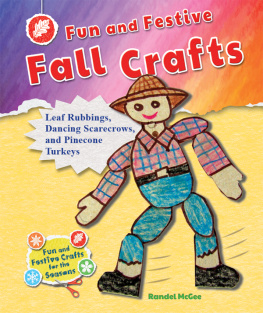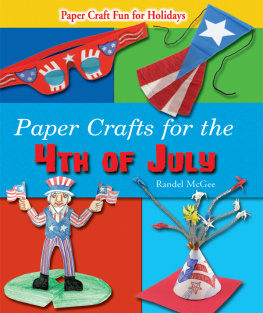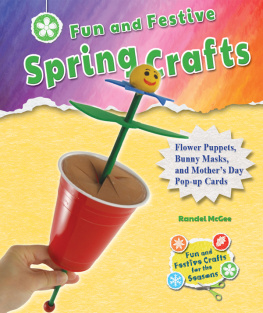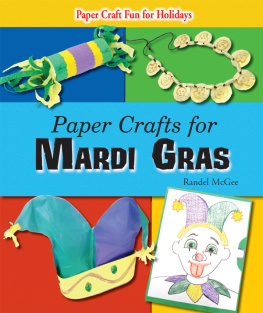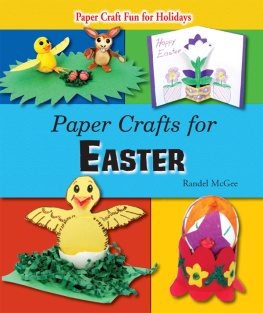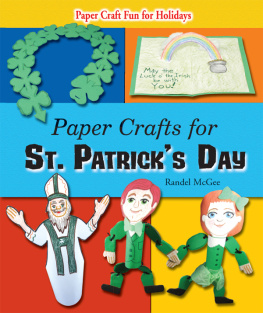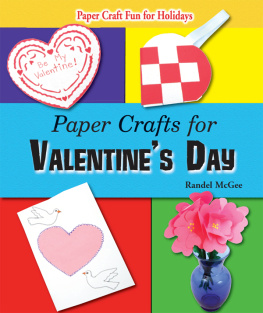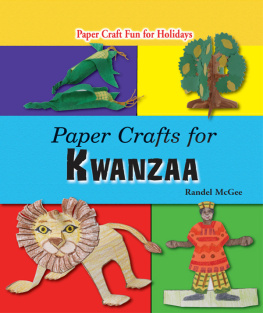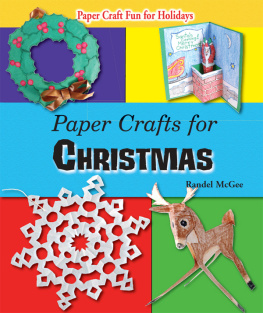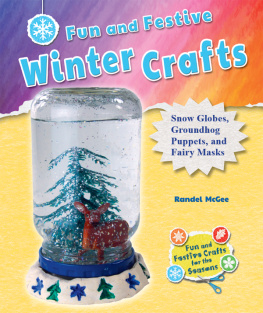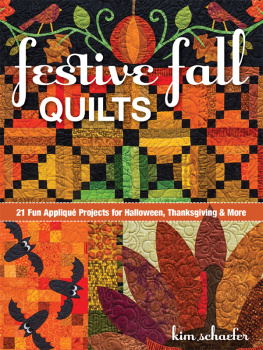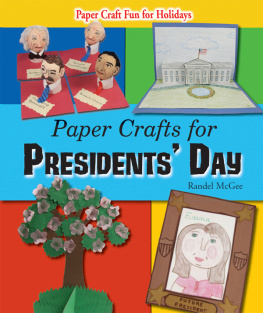MAKE AWESOME PROJECTS FOR AUTUMN!
In autumn, crops are harvested, leaves change color, and school begins. In Fun and Festive Fall Crafts: Leaf Rubbings, Dancing Scarecrows, and Pinecone Turkeys, create easy crafts as you learn about the fall season. Read about symbols, holidays, and special events that take place during this colorful time of year and get creative!
AUTHORS NOTE: The projects in this book were created for this particular season. However, I invite readers to be imaginative and find new ways to use the ideas in this book to create different projects of their own. Please feel free to share pictures of your work with me through www.mcgeeproductions.com . Happy crafting!

Legends say that in ancient China, there were ten suns that took turns warming Earth. One day, all the suns came up at the same time. They burned Earth! The crops started to die, and the rivers began to dry up. Hou Yi (How Yee) was the best archer in all of China. His wife, Chang E (Chahng Eh), asked him to save their crops. Hou Yi ran to a mountain and shot nine of the suns out of the sky. The crops were saved!
The Emperor of the Sky rewarded Hou Yi with a potion that would make him and Chang E live forever. They decided to drink the potion in the light of the first full moon after the harvest. On that day, Hou Yi went hunting. While he was away, his evil neighbor broke into his house to steal the potion for himself. Chang E drank the potion rather than let the wicked man have it.
Hou Yi returned in time to see his wife floating into the sky as an immortal. She stayed on the moon. When the moon was full after the harvest, Chang E danced and waved to her husband back on Earth. Hou Yi lit a special lantern so she could see him, and he sent her a round moon cake tied to an arrow. Chinese people all over the world celebrate the Moon Festival at harvesttime and light fancy lanterns and serve round moon cakes.
In the Northern Hemisphere, autumn is the time of year when Earth begins to tilt farther away from the sun. The days grow shorter and the nights grow colder. The autumnal equinox is the day that the hours of daylight and night are the same. This usually happens around September 22.

Image Credit: Designua/Shutterstock.com
Tree leaves change from green to yellow, orange, red, and brown, and the school year begins again. English-speaking people often call this time fall from an old phrase, Fall of the Leaf, that described what happened to the trees. There are holidays to celebrate the harvest all around the world, such as the Moon Festival in China, Halloween in Ireland and the United States, and Thanksgiving in North America. The crafts in this book give you some projects you can take back to school with you. Enjoy the changing season!
During the spring and summer months, the leaves make chlorophyll (KLOR-o-fill), a green food that helps the tree grow. When the days get shorter and the nights get colder, the leaves stop making chlorophyll. Without chlorophyll, the green color fades away showing the real color of the leaf: yellow, red, orange, or brown. Then the leaves dry up and fall off.
- freshly fallen leaves
- paper towels
- sheets of newsprint, butcher paper, or bulletin board paper
- crayons
- scissors
- glue
- construction paper or poster board
1. Gently rinse the leaves with water and dry them with the paper towels.

2. Lay the leaves on a smooth flat surface such as a table or desk.
3. Cover the leaves with a sheet of newsprint, butcher paper, or bulletin board paper.
4. Remove some of the paper wrapping from the crayon so that you can use the side rather than the point. Note: There are large crayons that have flat sides and work well for this project.

5. Use the side of the crayon to gently rub the paper covering the leaves until you see the shape of the leaves.
6. Use scissors to trim or shape the edge of the paper with the leaf rubbings as you wish.

7. Glue the leaf rubbings to a sheet of construction paper or poster board.
8. Use the mounted rubbing as a wall decoration or place mat.
In 1500, a mineral was found in England that was black and soft and left a mark. The English were soon selling thin rods of the mineral to use for writing and drawing. They called it graphite (GRAFF-ite). William Monroe was the first American to put the graphite into a wooden holder and make a pencil like people use today. Put pizzazz on your pencil with playful pencil pals!
- scissors
- pencils (one for the project and another to draw with)
- craft foamany color
- hole punch

1. Print and cut out the patterns from .

2. Trace the patterns onto craft foam. You can also make your own design.
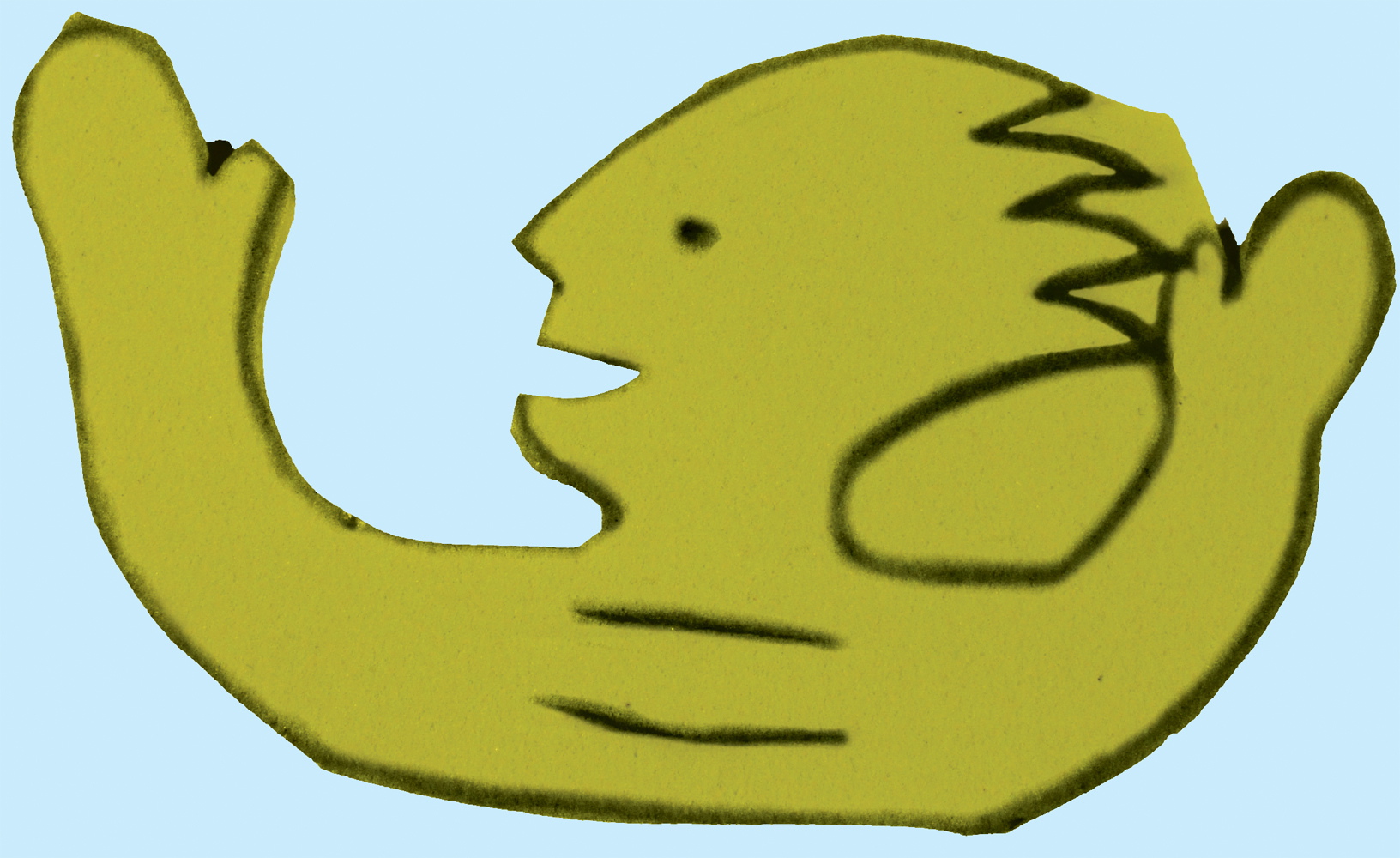
3. Cut out the foam design. Use the hole punch to make eyes.

4. Slip the eraser end of the pencil through the two slits on the body of the pencil pal. Your pencil pal is now ready to join you for a busy day!
Early books were made from clay tablets, metal plates, thin wooden boards, and long sheets of papyrus made from crushed plant stems and bark. Most early books were considered treasures and were protected from dirt and damage by special boxes or coverings. Francis Bacon, an English author and philosopher (15611626), was so impressed with the things he learned from books that he wrote the famous line: Knowledge is power. Protect the power source! Decorate your schoolbooks and storybooks with these covers.
- brown paper grocery bag
- scissors
- pencil
- ruler
- construction paperdifferent colors
- glue
- permanent markers

1. Cut off the bottom of the brown paper bag and cut along one corner to open the bag out into a single sheet.
2. Lay the paper out flat on a smooth work area such as a desk or table. Gently open the book you are covering on the paper with the pages facing up.

